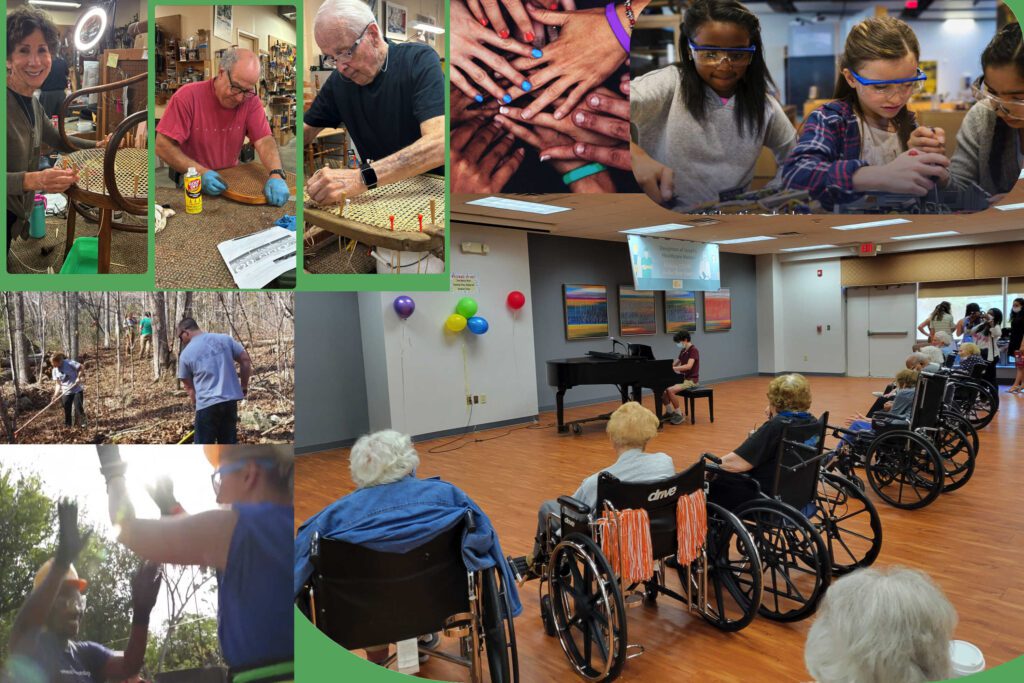Beyond Basic Volunteering
How to Partner with Nonprofits and Create a Standout Volunteering Project for College Applications
Volunteering is an excellent way to give back to your community, but if you want to stand out on your college applications, you need to go beyond simply logging hours. Colleges look for initiative, leadership, and impact in extracurricular activities. By designing your own volunteering project, you not only make a meaningful difference but also demonstrate creativity, problem-solving, and dedication. Here’s how to develop a project that sets you apart.
Step 1: Determine Your Motivation
Before you start, take a moment to reflect on what drives you. Your motivation will help you stay committed and shape the direction of your project. Consider whether you are most drawn to volunteering based on:
- Interest: A cause or field you are passionate about (e.g., environmental conservation, literacy, or mental health).
- Skills: A particular ability you have that could benefit others (e.g., tutoring, coding, public speaking, social media marketing).
- Impact: A desire to solve a pressing problem or provide a meaningful improvement to your community, regardless of the specific tasks or causes involved.
Step 2: Identify Gaps in Community Needs
To create a meaningful project, you need to identify areas where help is needed.
- Be Observant: Pay attention to issues in your neighborhood, school, or local community.
- Ask Around: Speak to family, friends, community members, teachers, and local leaders.
- Research: Read local news and minutes from recent government meetings, join online community groups, and check social media pages of nonprofits.
- Use SamaritanScout.org: Search for local nonprofit organizations to see what causes already have active initiatives and opportunities for you to add value.
If you already have an idea of an issue that needs attention, this step will help you validate your concern and refine your focus.
Step 3: Research Local Organizations
Rather than starting from scratch, look for existing organizations working on causes that align with your motivation. Supporting an established nonprofit can provide structure and resources to help you maximize your impact.
- Look at their mission and activities: How do they help the community? Where might they need extra hands or innovative ideas?
- Identify areas for contribution: Can you enhance their current programs with your skills or propose a new initiative?
- Reflect upon their target audience and vision: Can you imagine actions or programming that aligns to their goals but does not seem to exist? Perhaps you can help them implement something new or different that they did not have the capacity to explore until you came along.
Step 4: Take Inventory of Your Skills
Many teens underestimate the valuable skills they already possess. Take some time to list out:
- Academic strengths (writing, researching, math, science, etc.)
- Tech-savvy abilities (social media, website creation, photo/video editing, coding, powerpoint/slides creatin, canva, photoshop)
- Administrative or organizational aptitude
- Leadership or operations experience
- Public speaking or advocacy skills
- Creative talents (art, music, design)
This self-assessment will help you craft a project that plays to your strengths.
Step 5: Reach Out to Organizations
Once you’ve identified a few nonprofits or agencies (or even government offices and departments!) that aligns with your project vision, it’s time to make contact. Craft a letter of introduction that you can email or send through an online contact form. Your message should:
- Express your enthusiasm for their mission and work.
- Demonstrate your knowledge of their organization and its initiatives.
- Outline your skills and what you can offer, highlighting abilities that lead to the development of new skills such as an ability to teach yourself, persist in the face of challenges, and communicate effectively.
- Propose a meeting (preferably in person, but Zoom or phone calls work too) to discuss how you can contribute. Be sure to offer several dates and timeframes for them to pick from.
- Specify your availability in terms of weeks and hours for the project.
Step 6: Collaborate to Craft Your Project
Once you’ve connected with an organization, work together to shape your volunteering project. This could involve:
- Running a workshop or after-school program.
- Developing a social media campaign or website.
- Organizing a fundraiser or community event.
- Assisting with data entry, research, or marketing efforts.
- Creating an initiative to fill a gap in their services.
By tailoring your volunteer experience in this way, you go beyond simply showing up—you take ownership of a project that has tangible results. For examples of real life volunteer projects that high school students have pursued, read these case studies for inspiration.
Step 7: Execute and Document Your Impact
As you work on your project, keep track of your progress. Document your impact with:
- Photos and videos
- Testimonials from those you’ve helped
- Metrics (e.g., funds raised, participants reached, social media engagement)
- A summary of what you learned and accomplished
This documentation will not only be useful for your college applications but will also serve as a source of personal pride in your achievements.
Final Thoughts
By following these steps, you’ll create a volunteering experience that is both meaningful and impressive. Colleges value students who take initiative and create lasting change. Most importantly, you’ll have made a real difference in your community—something far more valuable than just a resume boost.
Ready to get started? Use SamaritanScout (the Internet’s first search engine focused on connecting people to volunteering) to find organizations near you and start crafting your impact today!


